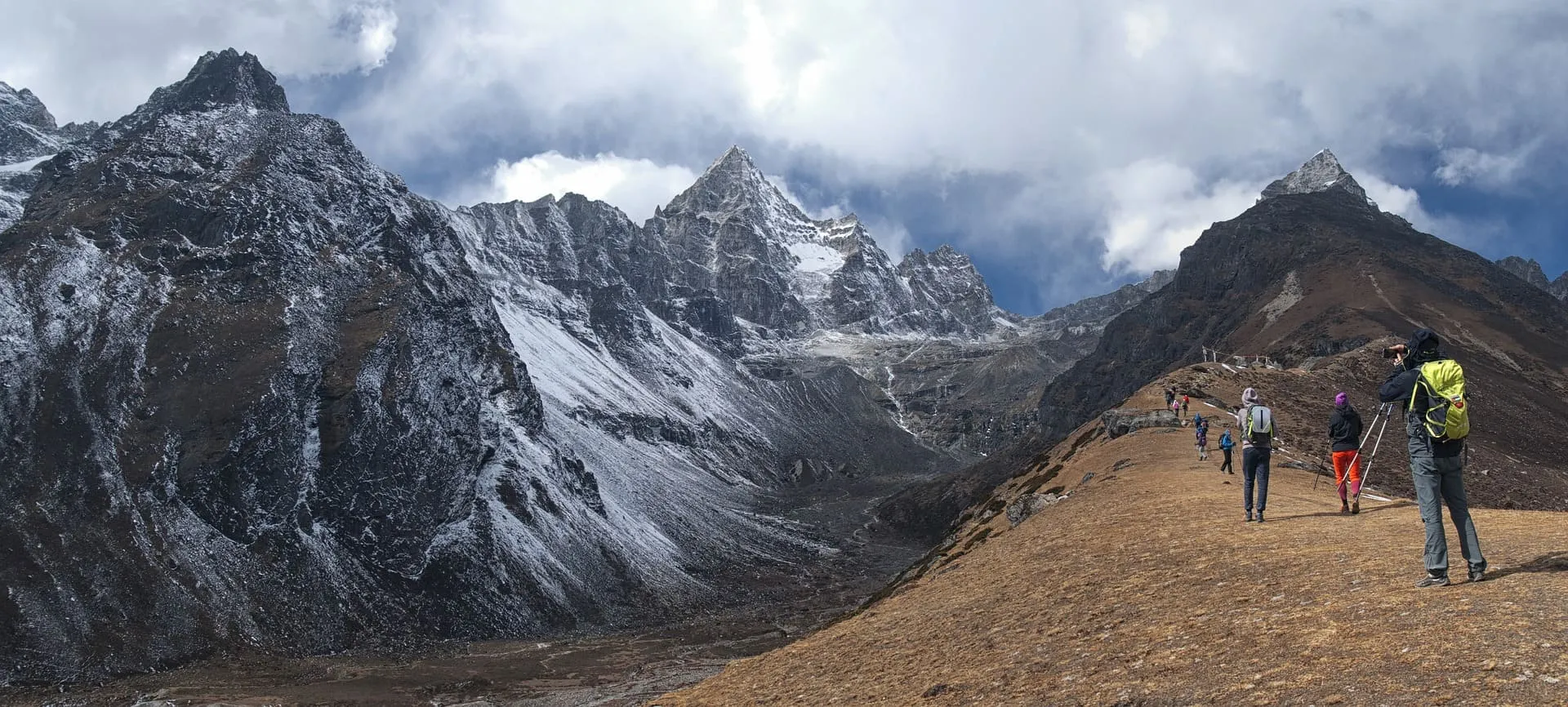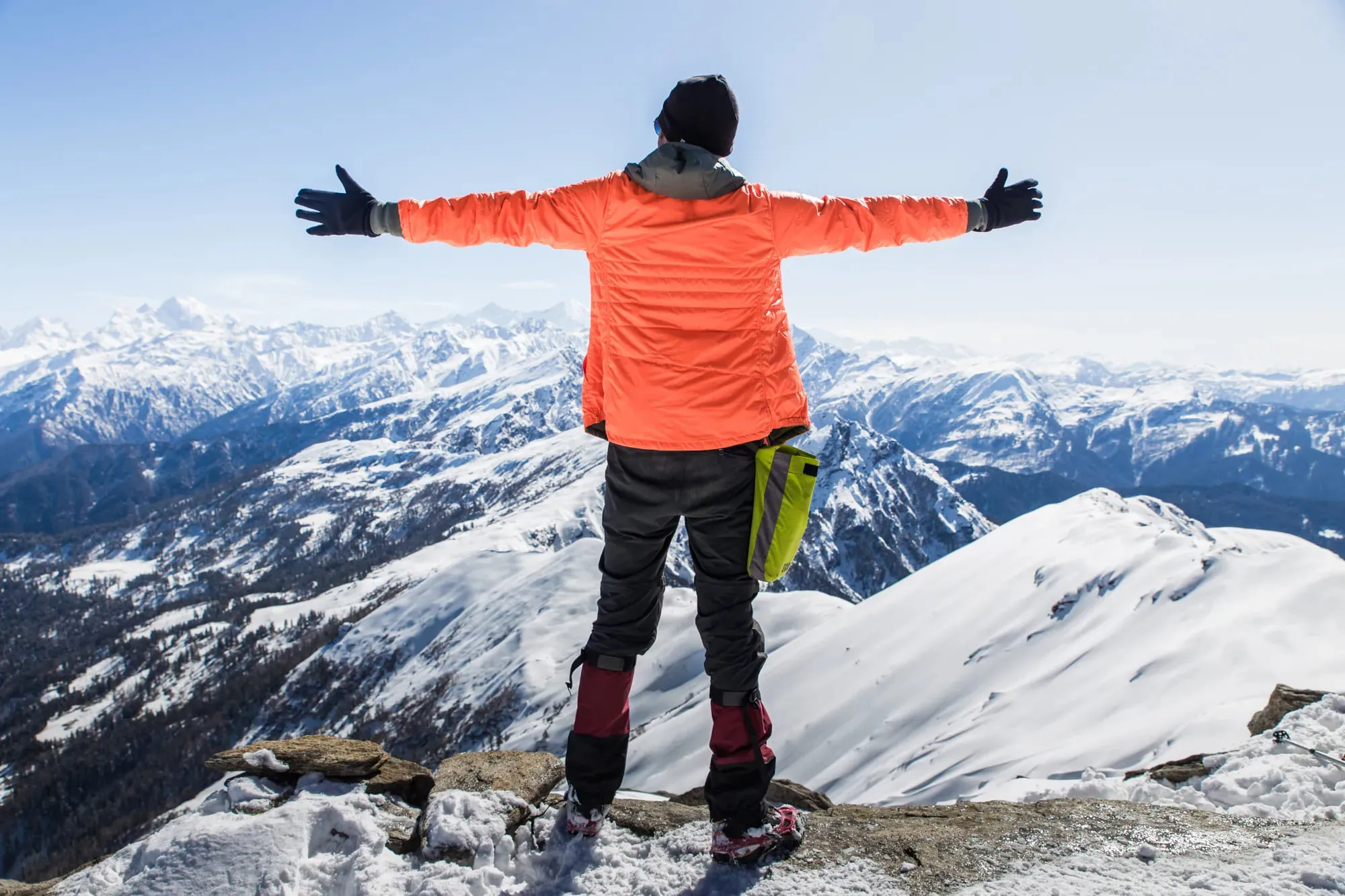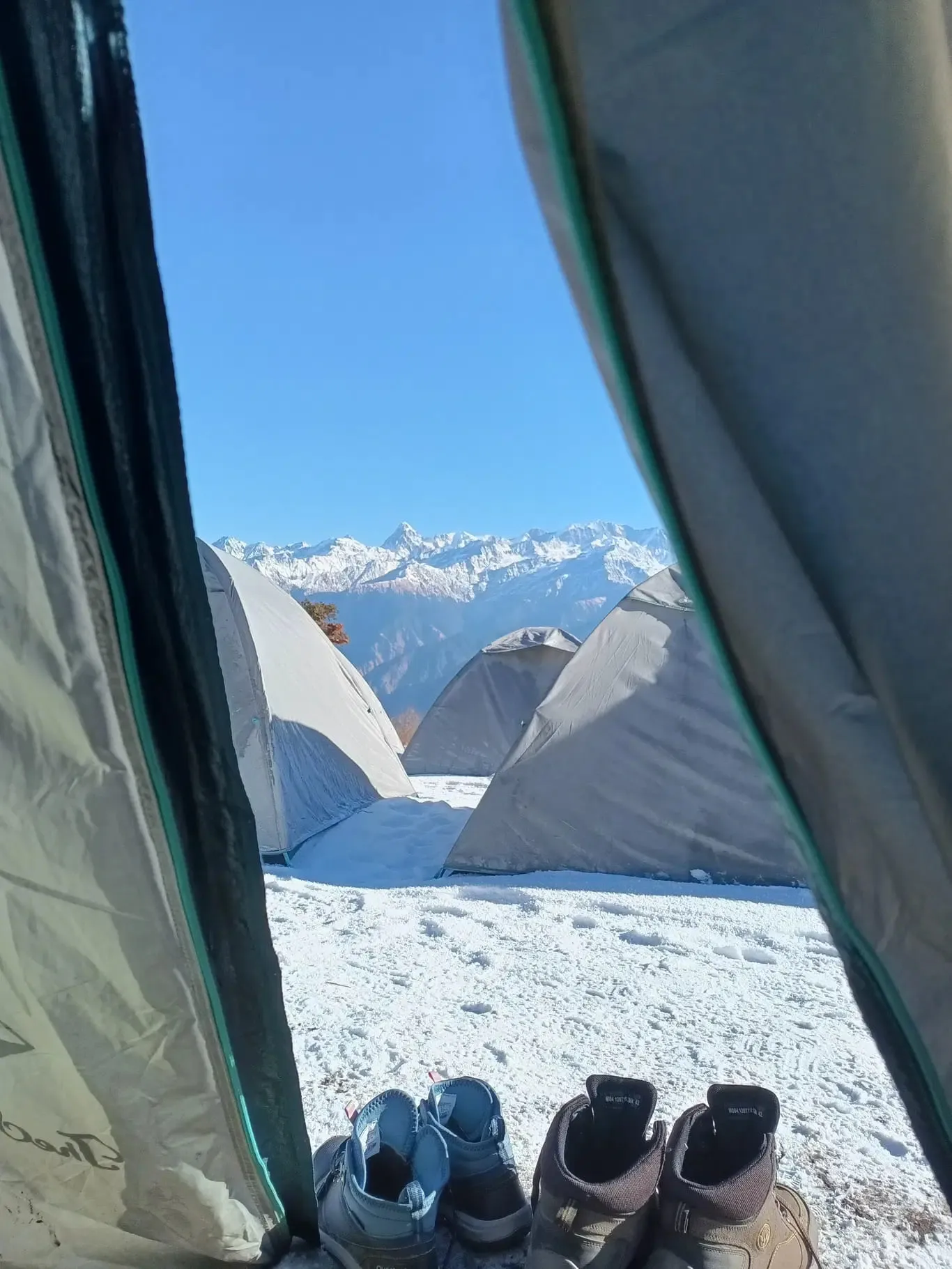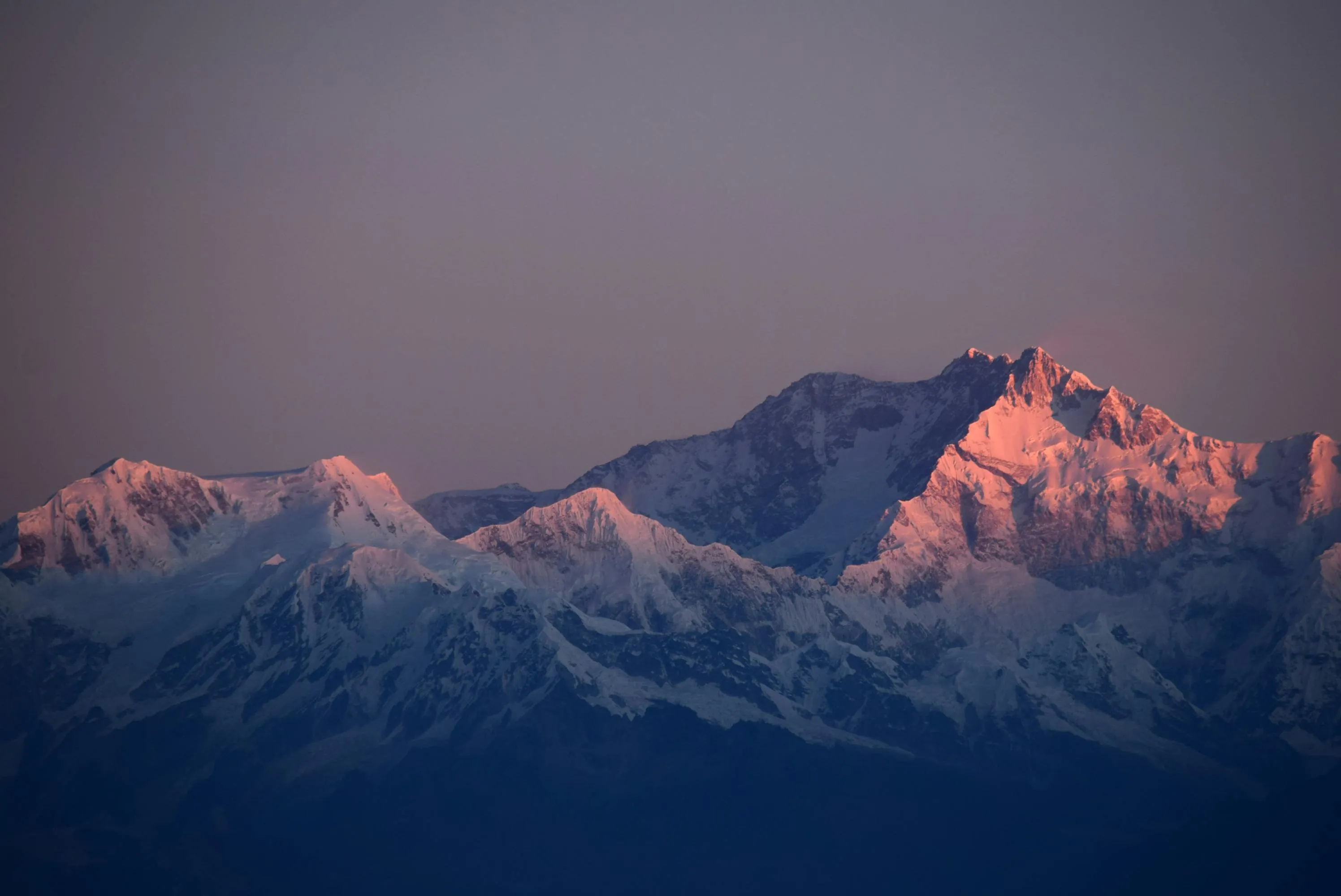
The Highest Peak in the Lesser Himalayan Region
Location
Uttarakhand
Duration
2D/1N
Distance
16 Km approx
Altitude
9,915 ft
Difficulty
Easy-Moderate
Price
₹ 4,499/- Onwards
Overview
Nag Tibba, also known as Serpent's Peak, is the highest peak in the Lesser Himalayan region of Garhwal, Uttarakhand. The trek to Nag Tibba is a relatively easy trek and is perfect for beginners. The trek offers a panoramic view of the Himalayas, including the Bandarpoonch, Swargarohini, Srikanth, and Black Peak. The trek is about 16 km long and takes about 2 days to complete. The trek starts from Pantwari village, which is about 85 km from Dehradun. The best time to visit Nag Tibba is from November to March.
The trek to Nag Tibba is a great way to experience the beauty of the Himalayas and get away from the hustle and bustle of city life. The trek is relatively easy and can be done by people of all ages. The trek offers stunning views of the snow-capped peaks of the Himalayas and the lush green valleys below. The trek is a great way to experience the beauty of nature and get some exercise at the same time.

Brief Itinerary Your day-to-day breakup of activities.
DAY 1 : DEHRADUN TO PANTWARI VILLAGE AND TREK TO BASE CAMP
- 90 km drive
- 4 Km trek
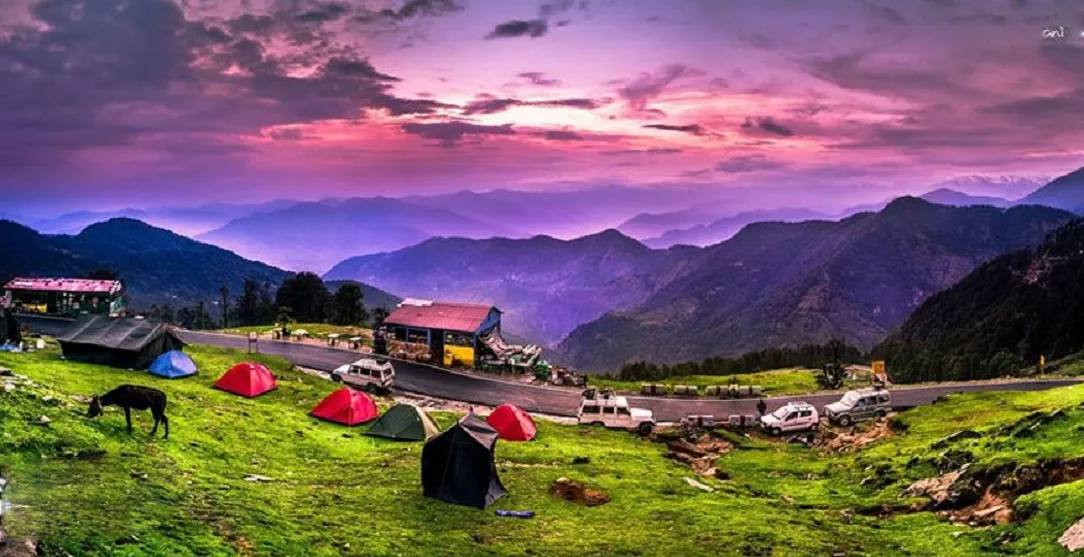
Welcome to Pantwari Village Arrive at Pantwari Village and start your trek to the base camp. The trek is about 4 km long and takes about 3-4 hours to complete. The trek is relatively easy and offers stunning views of the surrounding mountains and valleys. Overnight stay at the base camp.
Your adventure begins with a 6:00 AM pick-up from Prince Chowk, near Dehradun Railway Station. Enjoy a picturesque 90 km drive to Pantwari village, passing through Mussoorie and Kempty Falls. Along the way, stop at local roadside inns for breakfast (meal expenses to be borne individually).
Upon arriving at Pantwari village, relish a delicious lunch before embarking on a 4 km gradual trek to the campsite. The trek offers breathtaking views of the surrounding landscapes, setting the tone for an unforgettable experience.
At the campsite, unwind with evening snacks and refreshments, soaking in the serene beauty of the mountains. As the day ends, enjoy a warm dinner under the starlit sky before settling into your tents for a peaceful overnight stay.
Altitude
4,640 ft
Stay
Campsite
Food
Lunch, snacks & dinner
DAY 2 : BASE CAMP TO NAG TIBBA AND BACK TO PANTWARI TO DEHRADUN (12 KMS TREK, 90 KMS DRIVE)
- Trek Distance: 12 km
- 90 Kms Drive

Welcome to Nag Tibba Start your trek to Nag Tibba early in the morning. The trek is about 12 km long and takes about 6-7 hours to complete. The trek is relatively easy and offers stunning views of the surrounding mountains and valleys. After reaching the summit, start your descent back to Pantwari village. Drive back to Dehradun.
Start your day with an early morning trek to Nag Tibba summit at 5:00 AM. This 4 km moderate ascent offers breathtaking views but lacks water sources, so ensure you carry at least 1 liter of water. As you make your way up, experience the tranquility of the dense forests and open ridges leading to the peak.
Upon reaching the Nag Tibba summit, soak in the panoramic views of the snow-capped Himalayan peaks. Spend some time in the serene surroundings, capturing memories and enjoying the fresh mountain air.
After taking in the spectacular sights, begin your descent back to Pantwari village via the Base Camp. The downhill journey allows you to appreciate the beauty of the trail from a different perspective.
Once back at Pantwari village, recharge with a hearty lunch before starting the 90 km return drive to Dehradun. Enjoy the scenic route once again, reflecting on the adventure and the unforgettable moments spent in nature.
This marks the end of an exhilarating trek, leaving you with cherished memories of conquering one of Uttarakhand’s most beautiful peaks.
Max Altitude
9,915 ft
Food
Breakfast and lunch.
Trek Highlights The must do experiences that you can cross off your bucket list

Nag Tibba Summit – Stunning Himalayan Views
Experience the breathtaking 360-degree views of the Himalayas from the Nag Tibba summit, offering a mesmerizing sight of snow-clad peaks like Swargarohini, Bandarpoonch, Kedarnath, and Gangotri. A perfect reward for trekkers!

Dense Oak & Rhododendron Forests – Rich Flora & Fauna
Walk through lush oak and rhododendron forests, home to vibrant birdlife and diverse wildlife. These serene trails provide cool shade, a peaceful atmosphere, and an immersive experience in Uttarakhand’s natural beauty.

Scenic Mussoorie & Kempty Falls – A Refreshing Stop
Explore Mussoorie, the ‘Queen of Hills,’ known for its colonial charm and misty landscapes. Stop by the iconic Kempty Falls, where cascading waters create a picturesque and refreshing retreat amidst nature.

Himalayan Peaks Viewpoint – See Swargarohini, Kedarnath & More
Marvel at the majestic Himalayan ranges, including Swargarohini, Bandarpoonch, Kedarnath, and Gangotri, visible from multiple points along the trek. A paradise for photographers and nature lovers seeking panoramic mountain views.
How To Reach
To Dehradun
Price And Batches
Select Package Options
Please Select A Date
Please Select A Tour Package
Total Travellers
Price Total
Costings
- Select a package to see costing.
Why Trek With US?
Certified Guides
CommitmentOf Safety
Unique And Customized Experiences
Promote Sustainability
Quality Over Quantity
Inclusions And Exclusions
Inclusions:
- • Transportation: From Dehradun to Pantwari and back.
- • Accommodation: Swiss tents on quad/triple/double sharing basis at Base Camp for 1N
- • 5 meals on APAI basis from Day 1 to Day 2 (Day 1 (L+S+D) + Day 2 (B+L))
- • Guides and Staff: Experienced and qualified trek guides, along with friendly and supportive staff
- • Medical Facilities: First Aid Kits, Oxymeters, and Oxygen Cylinders
Exclusions:
- • 5% GST
- • Permits: Forest permits required for the trek
- • Any air /train charges to reach Dehradun
- • Porter/Mule charges for personal luggage or backpack offloading
- • Any extra stay/meals apart from the ones mentioned in the inclusions
- • Any expenses of personal nature
- • Meals during transit
- • Travel insurance / Medical insurance
- • Any tips for guide / driver / hotel & restaurant staff
- • Cost incurred or expenses arising due to natural calamities, strikes, breakdowns and any other
- • Any itinerary extension will be subject to additional cost
- • Unforeseen calamities beyond the control of Safarwallah
- • Any items not mentioned in include section
The Ultimate Fitness and Safety Checklist
Get Yourself Fit
How to Get Fit for the Nag Tibba Trek
1. Cardio Fitness
- Start by walking 4-5 km daily, then increase to 8-10 km.
- Add running, cycling, or swimming for 30-40 minutes, 4-5 days a week.
- Practice stair climbing to build endurance for uphill hiking.
2. Strength Training
- Leg Exercises: Do squats, lunges, and calf raises to strengthen your legs.
- Core: Try planks and sit-ups to build core strength.
- Upper Body: Do push-ups and shoulder exercises to prepare for carrying a backpack.
3. Flexibility
- Stretch daily to avoid injuries. Focus on legs and back.
- Yoga can help improve flexibility and balance.
4. Mental Preparation
- Practice deep breathing to improve lung capacity.
- Visualize the trek to build mental toughness.
5. Acclimatization
- Practice hiking on hills or use a treadmill with an incline to simulate trekking conditions.
6. Diet and Hydration
- Eat protein-rich foods (chicken, beans, eggs) and complex carbs (whole grains, veggies) to fuel your body.
- Drink plenty of water—at least 2-3 liters daily.
7. Practice with Backpack
- Train with a backpack. Start with a lighter load and gradually increase the weight.
Nutrition Tips for the Nag Tibba Trek
1. Eat Protein-Rich Foods
Incorporate lean proteins such as chicken, fish, legumes, and tofu to aid muscle recovery and growth.
2. Include Complex Carbohydrates
Fuel your energy levels with whole grains, fruits, and vegetables for sustained energy during the trek.
3. Stay Hydrated
Drink at least 2-3 liters of water daily. Proper hydration is essential for stamina and overall performance.
4. Snack Wisely
Choose energy-dense snacks like nuts, dried fruits, and energy bars to maintain your energy levels on the trail.
5. Limit Processed Foods
Avoid processed foods high in sugar and unhealthy fats. Opt for natural, whole foods whenever possible.
Essential Items for Health on the Nag tibba Trek
1. Water Bottle
Stay hydrated by carrying a durable, reusable water bottle. Consider adding purification tablets.
2. First Aid Kit
Pack a basic first aid kit with band-aids, antiseptic wipes, pain relievers, and any personal medications.
3. Energy Snacks
Bring energy-dense snacks such as nuts, dried fruits, and energy bars to keep your energy levels up.
4. Sunscreen
Protect your skin from UV rays by applying a high SPF sunscreen, especially at higher altitudes.
5. Personal Hygiene Items
Include biodegradable soap, hand sanitizer, and toilet paper for maintaining hygiene on the trek.
6. Trekking Poles
Use trekking poles to reduce strain on your knees and enhance stability on uneven terrain.
7. Warm Clothing
Bring warm layers to stay comfortable, especially in cold weather conditions during the trek.
Health and Safety Tips for the Nag Tibba Trek
1. Stay Hydrated
Drink plenty of water throughout the trek to prevent dehydration. Aim for at least 2-3 liters daily.
2. Acclimatize Properly
Take time to acclimatize to higher altitudes. Ascend gradually to avoid altitude sickness.
3. Use Sunscreen
Apply a high-SPF sunscreen to protect your skin from harmful UV rays, especially at altitude.
4. Pay Attention to Footwear
Wear sturdy, well-fitted trekking boots to prevent blisters and provide ankle support.
5. Communicate Your Plans
Inform someone about your trekking plans and expected return time for safety.
6. Follow Trail Markings
Stay on marked trails to avoid getting lost and to protect the environment.
7. Carry a First Aid Kit
Always have a first aid kit on hand for minor injuries or emergencies during the trek.
Trek Details All Details
The Nag Tibba trek is ideal for beginners, offering stunning views of the Garhwal Himalayas, lush forests, and open meadows. The trek is moderately challenging, making it accessible for those new to trekking while still providing a rewarding experience for seasoned trekkers. If this is your first trek, it's important to be mentally and physically prepared for the journey. Starting a regular fitness routine three to five months before the trek can help condition your body for the adventure. With determination and proper preparation, you can successfully complete the Nag Tibba trek and enjoy its breathtaking scenery and serene environment.
Age Limit
Participants aged 8 to 60 years are welcome to join the trek.
Experience Level
While prior trekking experience is preferred but not necessary, first-timers are given the opportunity to join.
Physical Fitness
Participants must be able to lift a 10-kilogram rucksack, or backpack. Physical fitness is essential; climbers need to be able to trek 4 km in 32 minutes without feeling overly stressed for pace.
Health Requirements
- Resting pulse rate: 60 to 90 beats per minute
- Blood Pressure: Diastolic 75 – 85 mm Hg, Systolic 100 – 130 mm Hg
- Resting respiratory rate: 12 to 20 breaths per minute
- No history of liver and kidney issues
- Absence of Diabetes Mellitus, Bronchial Asthma, Epilepsy, Heart problems, Hypertension, etc.
- No existing health issues that might adversely impact the participant during the trek
- BMI under 25 (Exceptions for individuals with heavy bone density and those regularly engaged in weightlifting exercises)
Pre-Existing Conditions
Participants with any pre-existing medical conditions or those currently on medication must declare them in the Self Declaration form.
Special Note for Junior Trekkers
For participants below 15 years, a parent or guardian must accompany them. Trekkers aged 15 to 18 can participate solo but must provide a signed disclaimer form from a parent or guardian.
Travel Essentials
When preparing for the Nag Tibba trek, it's essential to pack wisely to ensure a comfortable and safe journey. Here are some travel essentials to consider:
Clothing
- Thermal wear for cold nights
- Moisture-wicking t-shirts and trekking pants
- Fleece jacket and a down jacket for warmth
- Waterproof and windproof jacket
- Comfortable trekking shoes with good grip
- Extra pairs of socks and undergarments
- Cap or hat for sun protection
- Gloves and a scarf
Gear
- Backpack with rain cover
- Sleeping bag suitable for cold weather
- Trekking poles for stability
- Headlamp or flashlight with extra batteries
- Water bottles or hydration bladder
- Personal first aid kit
- Multi-tool or knife
- Portable charger for electronic devices
Toiletries
- Biodegradable soap and shampoo
- Toothbrush and toothpaste
- Quick-dry towel
- Sunscreen and lip balm with SPF
- Hand sanitizer and wet wipes
- Personal hygiene products
Miscellaneous
- Identification documents and permits
- Cash for expenses
- Snacks and energy bars
- Camera or smartphone for capturing memories
- Notebook and pen
- Map and compass or GPS device
The best time to visit Nag Tibba is from October to April. During these months, the weather is pleasant and ideal for trekking. In the winter months of December to February, you can experience snowfall and enjoy the snow-covered trails. Spring (March to April) offers blooming rhododendrons and lush greenery, making the trek even more scenic. Avoid the monsoon season (July to September) as the trails can be slippery and risky due to heavy rainfall.
Things to Do
Trekking
Embark on an adventurous trek to Nag Tibba, the highest peak in the lower Himalayas of Uttarakhand. The trek offers stunning views of the snow-capped Himalayan ranges, including Swargarohini, Bandarpoonch, Kedarnath, and Gangotri. The trail takes you through dense forests of oak and rhododendron, providing a serene and picturesque trekking experience.
Camping
Enjoy camping under the starry sky at the Nag Tibba base camp. The campsite offers a tranquil environment surrounded by nature, making it a perfect spot to relax and unwind. Experience the thrill of a bonfire night with fellow trekkers, sharing stories and enjoying the warmth of the fire.
Village Tourism
Explore the charming villages of Pantwari and Thatyur, where you can experience the local culture and hospitality of the Garhwali people. Interact with the villagers, learn about their traditional lifestyle, and enjoy the local cuisine. The villages offer a glimpse into the rich cultural heritage of the region.
Birdwatching & Photography
The Nag Tibba region is home to a variety of bird species and wildlife. Birdwatchers can spot Himalayan monals, pheasants, and other exotic birds. The scenic landscapes and panoramic views provide excellent opportunities for photography, capturing the beauty of the Himalayas and the diverse flora and fauna.
Photo Gallery























Faq's
Testimonials
Alternative Treks
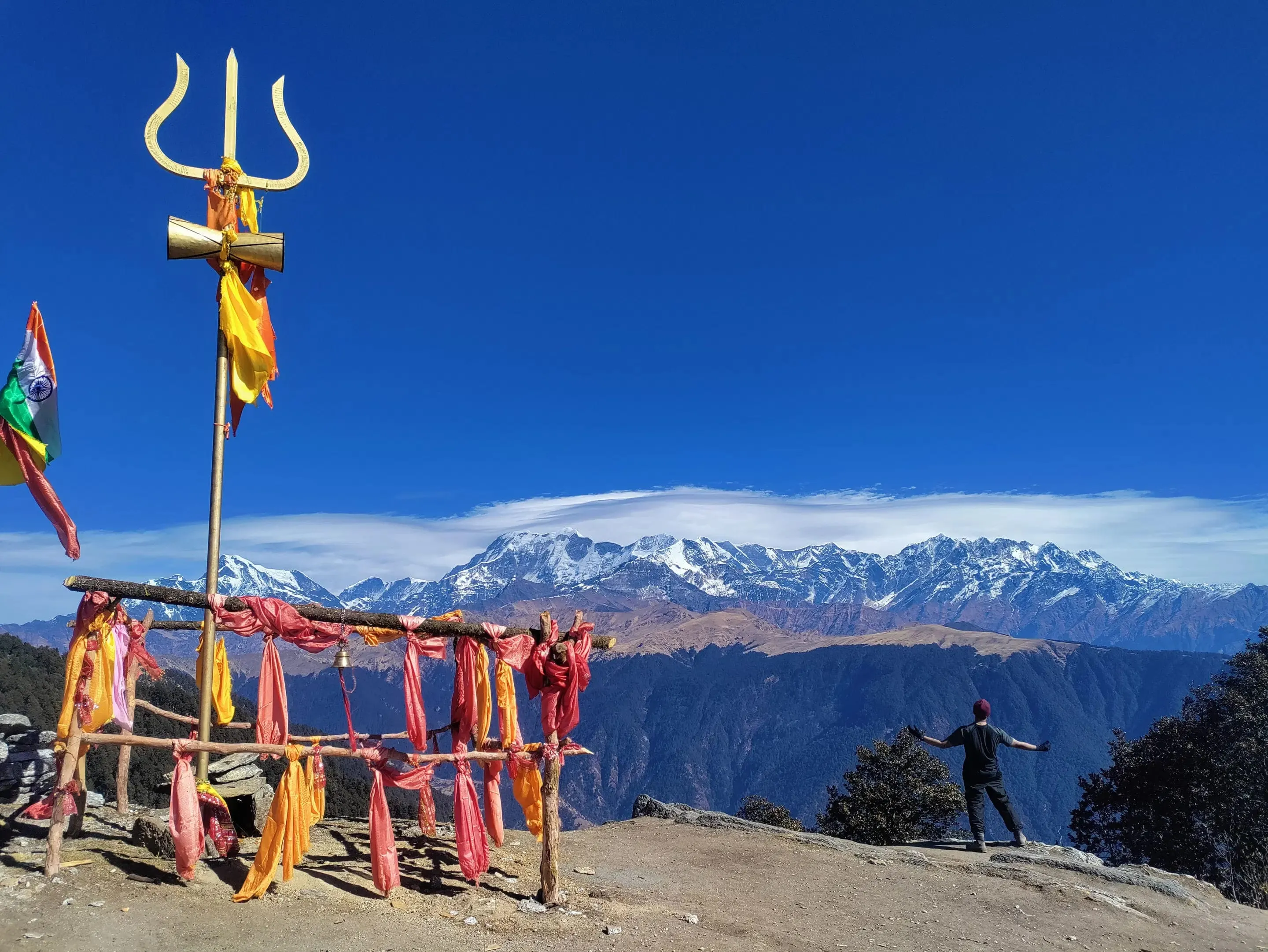
₹ 5,999/- onwards
Brahmatal
Lohanj,Uttarakhand
6D/5N
15 Nov+ 11 Batches
29 kms
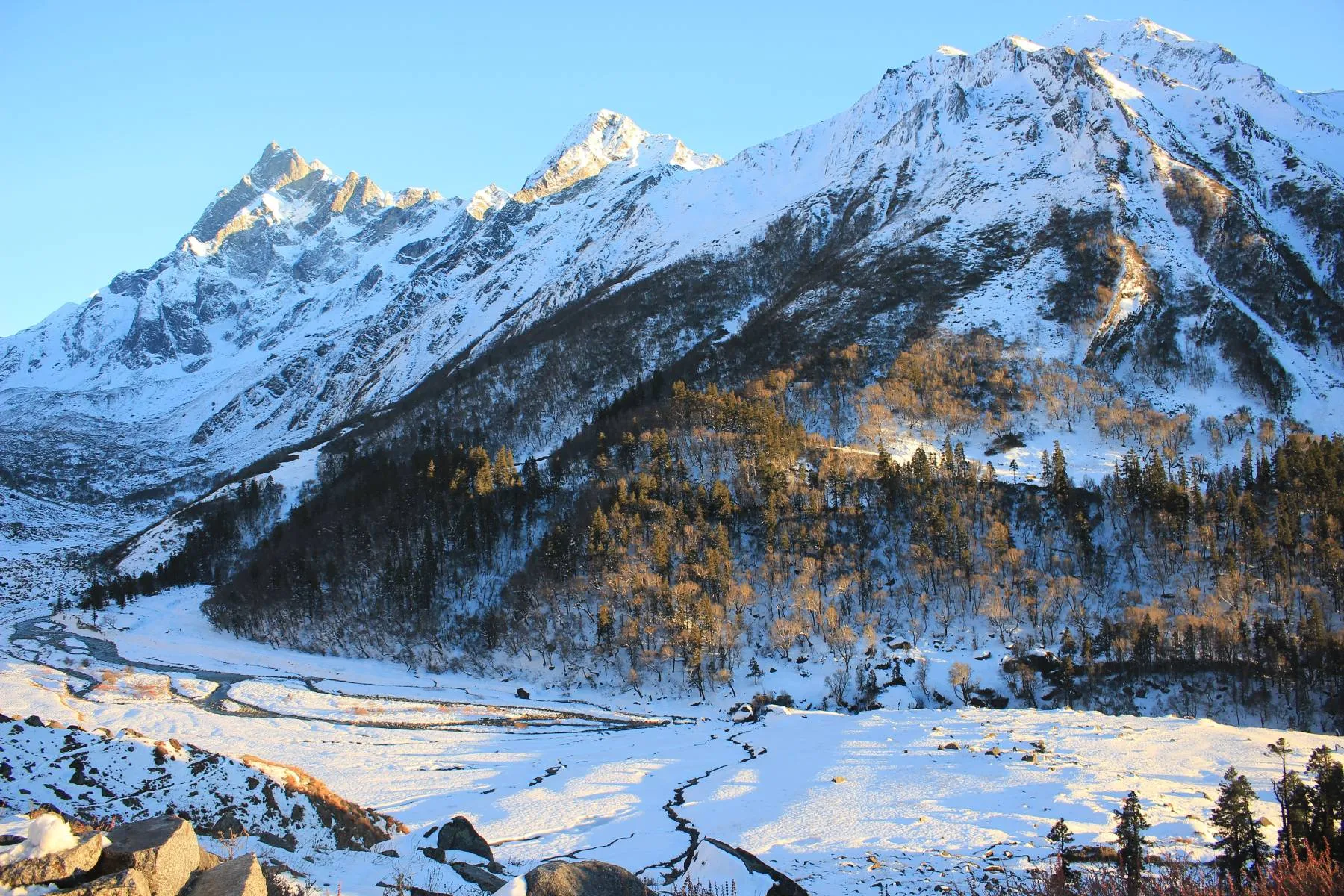
₹ 9,999/- onwards
Har ki Dun
Garhwal,Uttarakhand
7D/6N
15 Nov+ 11 Batches
44 kms

